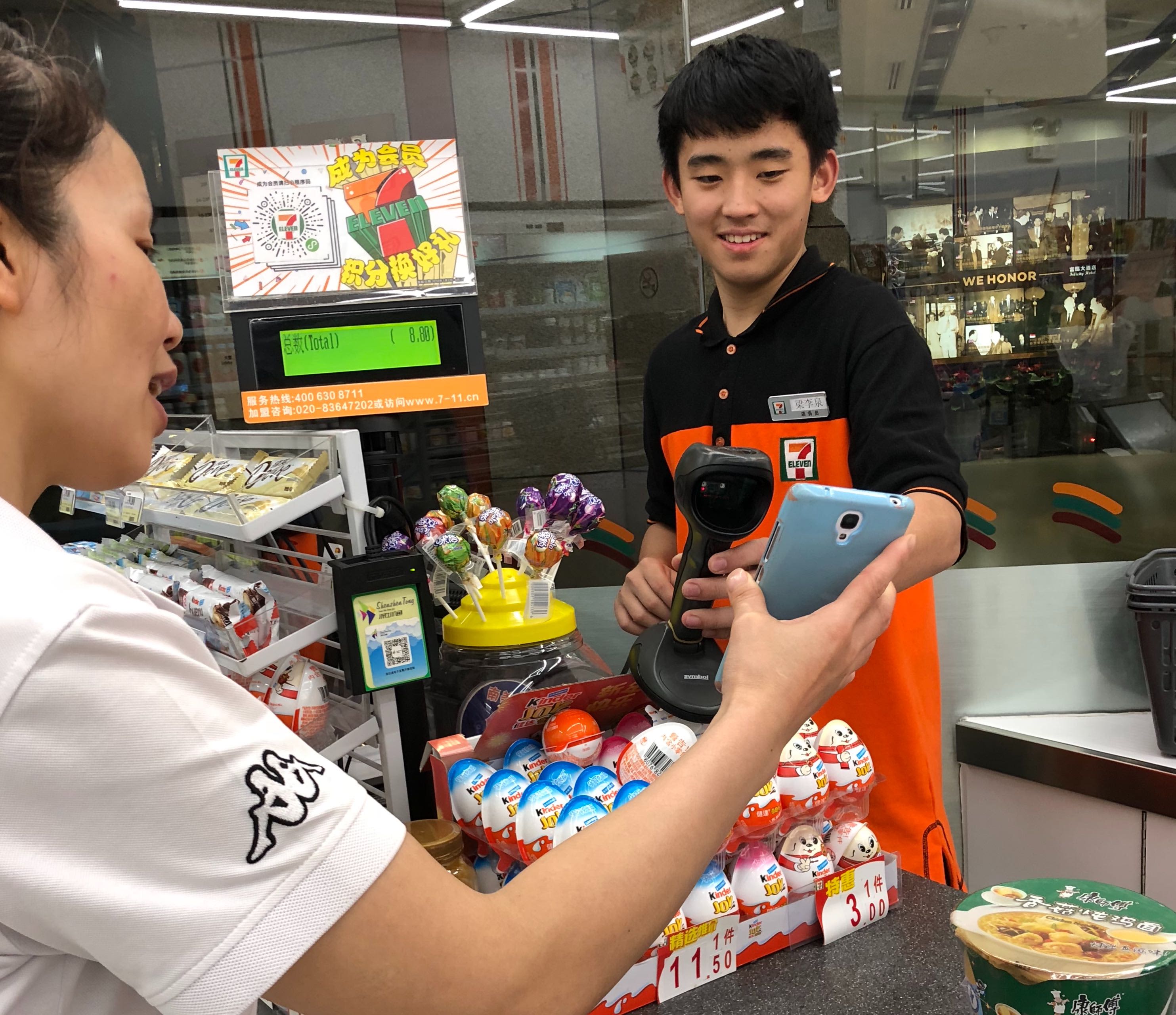A 711 employee accepts a mobile payment from a customer in Shenzhen, China
Uptin Saiidi | CNBC
BEIJING — A few months ago, I got out of a taxi upon arriving at my hotel in Beijing. As mainstream credit cards are uncommon and rarely accepted here, I handed the driver cash.
I couldn’t speak Chinese and he couldn’t speak English. He shook his head fiercely refusing the payment and pointed to his phone. He wanted me to pay through QR code — a popular method for payments in China.
After much back and forth and me telling him I didn’t have WeChat Pay or AliPay, I handed the cash to the hotel door staff. The staff member didn’t have any cash on him to provide change (we decided to let it go), and he then used his personal phone to pay the driver through QR code.
This inconvenient scenario is common for foreigners like myself visiting China — it’s not just with transportation. Even at American staples like Starbucks and 7-Eleven — if you’re not paying by phone, you’re the odd person out.
I visited a Starbucks in Beijing’s touristy and international Sanlitun district. After seeing a dozen or so customers before me pay with their phone, I asked the cashier if she would accept cash. She sighed loudly, called for the manager, who unlocked the drawer of her payment terminal and they both hunted to find the exact change. Inside the drawer, there were no dividers for neatly separating banknotes, as you would find in cash registers outside China — but rather a free-for-all, like a Monopoly board game that was hastily packed up.
The narrative around China’s payment process tends to be that everybody uses their phone and that it’s both advanced and convenient. While this is certainly true, it’s often forgotten that for those of us without a Chinese bank account, it’s the opposite. For me, China has been the most challenging place to get around for the sheer reason that nobody wants to take my cash.
Despite being based in Hong Kong and having a Hong Kong bank account, I haven’t been able to use AliPay or WeChat Pay as the platforms traditionally require a Chinese bank account and phone number.
But that all changed this week when AliPay, run by Alibaba affiliate Ant Financial, and Tencent-backed WeChat Pay announced foreigners in China could now link accounts to Visa and Mastercard.
Last year, there was a total of 141 million inbound visitors to China, up 1.2% compared to a year prior.
Alipay and its partners currently have more than 1.2 billion users. In 2018, AliPay was ranked as the largest non-social networking application worldwide by monthly active users, according to App Annie, an analytics company.
And AliPay and WeChat Pay’s influence is growing. I’ve recently started to notice both payment options available in certain parts of San Francisco’s Bay Area, where Chinese tourists frequent.
Hopefully, China’s mobile payments stay popular for my future trips to China, because there is now a new trend I’ve started to see that could make mobile payments lose steam: Paying with your face, through facial recognition technology.
